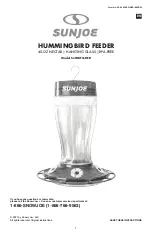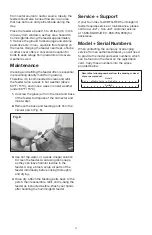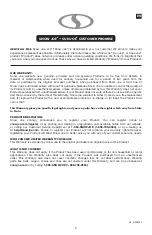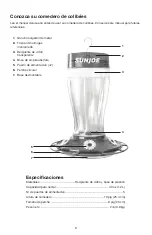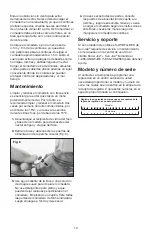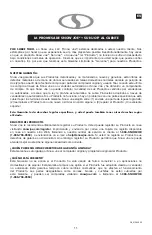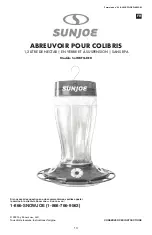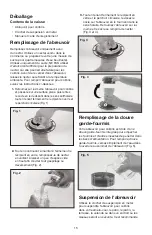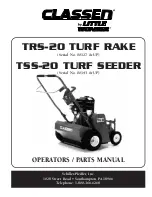
Unpacking
Carton Contents
• Hummingbird feeder
• Metal hanging hook
• Quick guide with registration card
Filling the Feeder
Fill the hummingbird feeder with nectar only.
Use store-bought nectar, or make your own
(one part sugar to four parts boiling water). Use
sugar only; do NOT use honey or any artificial
sweeteners when making the nectar as it can be
fatal to hummingbirds. Cool the nectar to room
temperature before filling the feeder. Follow the
instructions below to fill the hummingbird feeder.
1.
Turn the hummingbird feeder over on a flat
surface, and remove the base by unscrewing
it in a counterclockwise motion while keeping
a firm grip on the glass jar and circular perch
(Fig. 1).
2.
While keeping a firm grip on the glass jar,
fill it with nectar, making sure to leave some
empty space at the top to prevent waste and
spillage (Fig. 2).
3.
Screw the base back onto the feeder by
turning it clockwise while keeping a firm grip
on the glass jar and circular perch. Turn the
feeder back over, and the base will fill with
nectar (Figs. 3 and 4).
Filling the Ant Moat
Your hummingbird feeder has a built-in ant moat
to prevent ants and other insects from getting
into the feeding ports. To fill the ant moat, simply
fill the opening at the top of the feeder with
water (Fig. 5).
Hanging the Feeder
Use the metal hanging hook to hang the
hummingbird feeder around your yard, patio,
garden, terrace, porch, or any safe location for
birds. It’s recommended to hang the feeder on a
sturdy surface such as a tree, shrub, or pole.
Choose a non-windy location for your feeder to
prevent nectar spill. It’s recommended to hang
the feeder in an open area, as hummingbirds
prefer open spaces that allow them to move
Fig. 1
Fig. 4
Fig. 5
Fig. 3
Fig. 2
3

